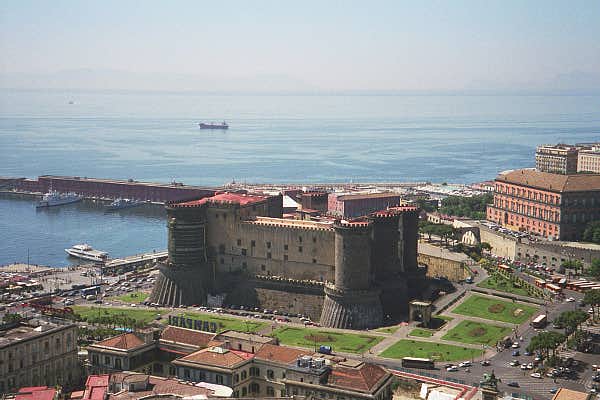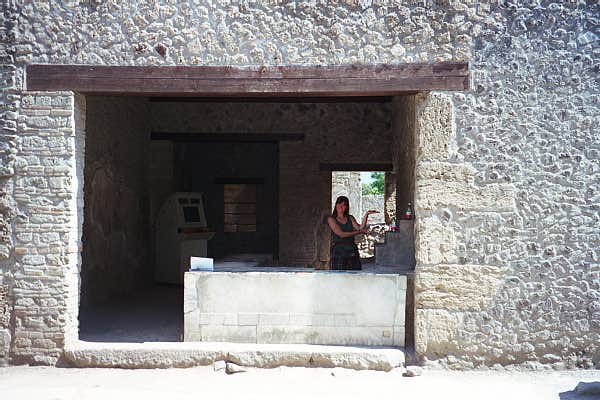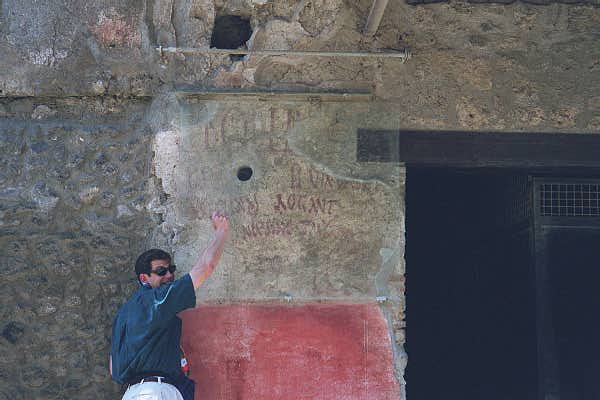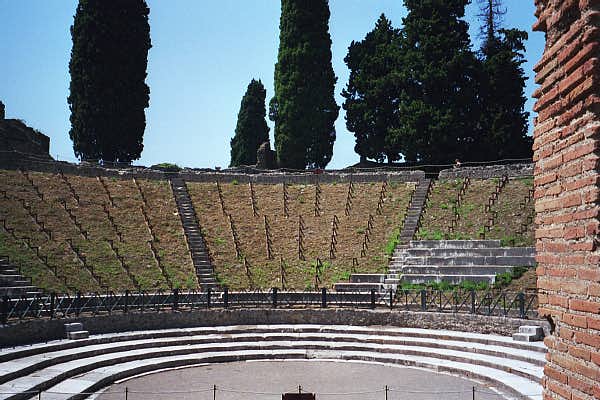After leaving Minturno, we spent the night in Naples -- a visit made memorable mainly by some fantastic pizza and Tom's emphatic introduction to which side you're supposed to cheer for in the televised soccer match. (Our big takeaway: wait for the people around you to commit.) We survived a hair-raising drive to a very secure parking garage, inferring the city motto as we careened through the streets: "Sometimes, we just honk."
Our hotel did have a good view of Naples' one attraction, the Museo Archeologico (see below). Nonetheless, we were happy to head south to Pompeii after a brief one-night stop. 
Ancient Civilization
Pompeii had all of the makings of a city that we would like to live in: a gracious forum for political debate, two well-designed arenas for sports and theater, bakeries with huge stone ovens, a wine bar on every corner. (Would you have bought drinks from this woman?)

There was also a well-proportioned market place presided over by a gracefully sculpted goddess of commerce, a bath house of sumptuous proportions, and countless elegant houses with sunny courtyards and mosaic floors. (A perennial favorite entry-way mosaic read "Cave Canem," Beware of Dog, with a picture of a toothy little dog growling.)
Mary and the market deity appear below.

Pompeiians apparently had vigorous political debate, and some of the graffiti promoting contenders for public office is still visible on the walls. (And no, Tom had nothing to do with it.) 
And no visit to Pompeii would be complete without a visit to the immense colliseum, set up along the same lines as the one in Rome but without the elaborate stage mechanisms. We crawled through the passages underneath the seats, including some dark little cubby holes where the lions used to await release. 
|



